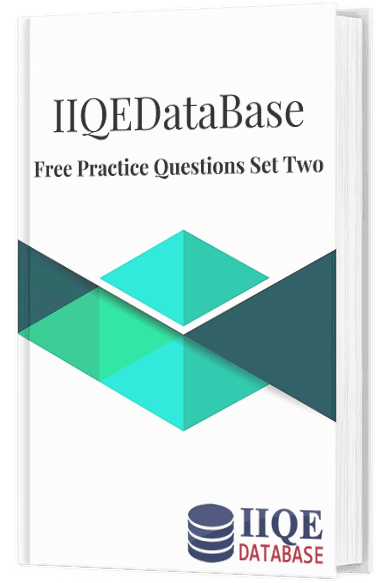You want to ace the IIQE Anti-Money Laundering and Counter-Terrorist Financing Regulations Exam? Well, you’ve come to the right place!
In this article, we’ll dive into the key concepts of AML and CTF regulations, helping you understand the ins and outs of this important field.
From risk assessment to reporting suspicious transactions, we’ll cover it all.
So, get ready to enhance your knowledge and prepare yourself for success on the exam.
Let’s get started!
Key Takeaways
- AML and CTF regulations aim to prevent money laundering and terrorist financing in financial institutions.
- Robust systems are required to identify and verify customer identities, monitor transactions for suspicious activities, and report suspicious transactions to authorities.
- AML training is important for protecting against financial crimes, enhancing business reputation, and improving detection and reporting of suspicious activities.
- Prevention measures include customer due diligence, staff training, robust internal controls, regular risk assessments, and detection techniques such as monitoring systems and audits.
Overview of AML and CTF Regulations
You need to understand the basics of AML and CTF regulations. These regulations have a significant impact on financial institutions. They are designed to prevent money laundering and terrorist financing activities by establishing a framework for detecting and reporting suspicious transactions.
Implementing AML and CTF regulations can be challenging for financial institutions due to the complex nature of financial transactions and the ever-evolving methods used by criminals. Institutions must develop robust systems and processes to identify and verify customer identities, monitor transactions for suspicious activities, and report any suspicious transactions to the appropriate authorities.
Understanding the challenges associated with implementing these regulations is crucial for financial institutions to ensure compliance and protect themselves from potential risks.
Now, let’s delve into the key concepts in anti-money laundering.
Key Concepts in Anti-Money Laundering
Key concepts in AML involve identifying and mitigating risks associated with financial crimes. To help you understand the importance of AML training, here are some key benefits to consider:
- Protection against financial crimes such as money laundering and terrorist financing
- Enhanced reputation and trustworthiness for businesses and financial institutions
- Compliance with global AML standards and regulations
- Improved detection and reporting of suspicious activities
- Prevention of potential legal and financial penalties
By training yourself in AML practices, you can contribute to a safer and more secure financial system. Understanding the global AML standards is crucial in combating financial crimes effectively.
Now, let’s move on to understanding counter-terrorist financing and its significance in maintaining financial integrity.
Understanding Counter-Terrorist Financing
In this discussion, you will explore the red flags for financing, as well as the prevention and detection methods related to counter-terrorist financing.
You will gain a detailed understanding of the indicators that may suggest illicit financing activities and learn how to effectively prevent and detect them.
Red Flags for Financing
Spotting red flags for financing is crucial in identifying potential money laundering or terrorist financing activities. To help you stay vigilant and protect yourself, here are three red flags to watch out for:
Large and frequent cash transactions: When you come across suspicious transactions involving large sums of cash or multiple smaller transactions, it’s a clear red flag. Criminals often use cash to obscure the source of funds and avoid detection.
Unusual transaction patterns: Look out for transactions that deviate from the norm. This could include sudden and significant increases in volume or frequency, transactions with high-risk jurisdictions, or transfers between unrelated parties without a clear business purpose.
Incomplete or inconsistent customer information: If you notice incomplete or inconsistent customer information, such as missing identification documents or contradictory details, it could indicate an attempt to hide illicit activities.
By recognizing these red flags, you can better protect yourself from being unknowingly involved in money laundering or terrorist financing.
Now, let’s delve into the next section on prevention and detection strategies.
Prevention and Detection
To effectively prevent and detect illicit activities, you should familiarize yourself with various strategies and techniques.
Prevention measures are crucial in mitigating the risks associated with money laundering and terrorist financing. Implementing robust internal controls, such as customer due diligence procedures, transaction monitoring, and staff training, can significantly reduce the likelihood of these activities occurring within your organization.
By conducting regular risk assessments, you can identify vulnerabilities and tailor your prevention measures accordingly.
Detection techniques, on the other hand, focus on identifying suspicious transactions and behaviors. Employing automated monitoring systems, conducting periodic audits, and establishing a strong reporting mechanism can help you recognize and report any potential red flags.
By combining prevention measures and detection techniques, you can strengthen your overall anti-money laundering and counter-terrorist financing framework.
Moving forward to the next section, risk assessment and due diligence measures play a critical role in assessing the potential risks associated with your clients and transactions.
Risk Assessment and Due Diligence Measures
When it comes to risk assessment, understanding its importance is crucial.
By conducting a thorough risk assessment, you can identify potential risks and vulnerabilities in your organization. This allows you to take the necessary steps to mitigate those risks and protect your business.
In addition, due diligence requirements play a significant role in ensuring compliance with regulations and laws.
Risk Assessment Importance
Understanding the importance of risk assessment is crucial for effectively complying with anti-money laundering and counter-terrorist financing regulations. By conducting a thorough risk assessment, you can identify and mitigate potential risks associated with money laundering and terrorist financing activities. This helps protect your business, clients, and the financial system as a whole.
When conducting a risk assessment, it is important to utilize appropriate methodologies to accurately assess and quantify the level of risk. There are various methodologies available, such as the qualitative approach, quantitative approach, and hybrid approach, each with its own advantages and limitations.
However, risk assessment does come with its fair share of challenges. Some common challenges include the availability of reliable data, the complexity of financial transactions, evolving money laundering techniques, and the need for continuous monitoring and updates.
Due Diligence Requirements
Now that you understand the importance of risk assessment, let’s dive into the next concept: due diligence requirements.
When it comes to anti-money laundering and counter-terrorist financing regulations, customer identification is crucial. To ensure compliance, financial institutions must implement enhanced measures to verify the identity of their customers. Here are three key aspects of due diligence:
Customer Identification Program (CIP): Establishing a robust CIP is essential for accurately identifying customers and assessing their risk level.
Enhanced Due Diligence (EDD): In certain high-risk situations, such as dealing with politically exposed persons or conducting transactions in jurisdictions with weak AML/CFT controls, enhanced due diligence measures must be implemented.
Ongoing Monitoring: Financial institutions should continuously monitor their customers’ activities to detect any suspicious transactions or risks that may arise over time.
By adhering to these due diligence requirements, financial institutions can effectively mitigate the risk of money laundering and terrorist financing.
Now let’s explore the next topic: reporting suspicious transactions.
Reporting Suspicious Transactions
If you notice any suspicious transactions, be sure to report them immediately. Suspicious transaction reporting is a crucial aspect of anti-money laundering (AML) regulations. By identifying and reporting red flags, you contribute to the prevention of money laundering and terrorist financing activities. AML red flags can include transactions involving large amounts of cash, frequent and unexplained transfers, or transactions involving high-risk jurisdictions. Reporting suspicious transactions allows authorities to investigate and take appropriate enforcement actions. To help you identify these red flags, here is a table that highlights some common indicators of suspicious transactions:
| AML Red Flags | Examples |
|---|---|
| Large cash deposits | $10,000 in cash deposited daily |
| Structuring transactions | Multiple small deposits to avoid detection |
| Unexplained fund transfers | Sudden large transfers to overseas accounts |
Compliance and Enforcement Measures
To ensure compliance with AML regulations, it is important to familiarize yourself with the enforcement measures in place. Compliance monitoring is a crucial aspect of AML regulations. It helps to detect and prevent money laundering and terrorist financing activities.
Regulatory sanctions play a significant role in enforcing compliance. These sanctions can include fines, penalties, and even criminal prosecution for individuals or institutions that fail to comply with AML regulations.
Compliance monitoring involves regular assessments and audits. These ensure that the necessary controls and procedures are in place to prevent money laundering and terrorist financing.
By actively monitoring compliance and implementing regulatory sanctions, authorities can maintain the integrity of the financial system and deter illicit activities.
It is essential for individuals and institutions to stay updated on the latest AML regulations and comply with them. This is to avoid severe penalties and reputational damage.
Frequently Asked Questions
What Are the Penalties for Non-Compliance With AML and CTF Regulations?
If you fail to comply with AML and CTF regulations, there are penalties to face. Non-compliance can have a severe impact on financial institutions.
These penalties are designed to ensure that organizations take these regulations seriously and actively work to prevent money laundering and terrorist financing. The penalties can include fines, sanctions, imprisonment, and loss of reputation.
Financial institutions must be diligent in their efforts to comply with these regulations to avoid these consequences.
How Can Financial Institutions Effectively Conduct Risk Assessments to Identify Potential Money Laundering or Terrorist Financing Activities?
Are you wondering how financial institutions can effectively identify potential money laundering or terrorist financing activities through risk assessments?
Well, the key is to conduct thorough and detailed assessments that analyze various factors, such as customer behavior, transaction patterns, and geographic risk.
What Are the Key Differences Between Anti-Money Laundering and Counter-Terrorist Financing?
The key differences between anti-money laundering (AML) and counter-terrorist financing (CTF) regulations lie in their focus.
AML regulations aim to prevent and detect financial transactions that are linked to criminal activities, such as money laundering.
CTF regulations, on the other hand, specifically target the financing of terrorist activities.
Both AML and CTF regulations have a significant impact on financial institutions. They require strict compliance measures, including customer due diligence and reporting suspicious transactions.
What Are the Common Red Flags or Indicators That May Suggest a Suspicious Transaction?
When it comes to spotting suspicious transactions, transaction monitoring is key. It’s like having a watchful eye that catches any unusual activity.
By conducting due diligence, you can identify red flags or indicators that may suggest something fishy is going on. For example, large cash deposits or withdrawals, frequent and unexplained transfers, and inconsistent transaction patterns can all raise suspicions.
These are just a few common signs to keep an eye out for during your monitoring process.
What Are Some Best Practices for Reporting Suspicious Transactions to the Relevant Authorities?
When it comes to reporting suspicious transactions, there are some best practices that you should follow.
First, it’s important to understand your reporting obligations as a financial institution. This includes knowing the relevant authorities to report to and the specific information they require.
Second, you should document all relevant details about the transaction, including any red flags or indicators that raised suspicions.
Conclusion
In conclusion, you have now gained a comprehensive understanding of the IIQE anti-money laundering and counter-terrorist financing regulations exam concepts.
By delving into the key concepts of AML and CTF, as well as the importance of risk assessment and due diligence measures, you are well-equipped to identify and combat suspicious transactions.
Compliance and enforcement measures will ensure that these regulations are upheld.
Remember, knowledge is power, and in the world of financial security, being equipped with the right tools can make all the difference in the fight against money laundering and terrorist financing.
So, don’t let any stone go unturned in your pursuit of safeguarding our financial systems.



